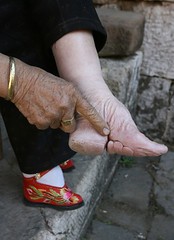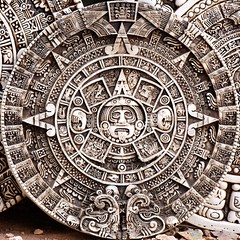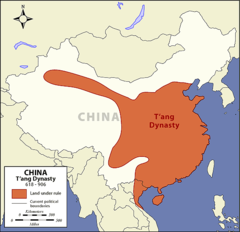| 8290778066 | Bedouin | nomadic pastoralists of the Arabian peninsula with a culture based on herding camels and goats | | 0 |
| 8290778067 | Mecca | Arabian commercial center; dominated by the Quraysh; the home of Muhammad and the future center of Islam | | 1 |
| 8290778068 | Medina | town northeast of Mecca; asked Muhammad to resolve its intergroup differences; Muhammad's flight to Medina, the hijra, in 622 began the Muslim calendar | | 2 |
| 8290778069 | Umayyad | clan of the Quraysh that dominated Mecca; later an Islamic dynasty | | 3 |
| 8290778070 | Muhammad | (570-632); prophet of Allah; originally a merchant of the Quraysh | | 4 |
| 8290778071 | Qur'an | the word of god as revealed through Muhammad; made into the holy book of Islam | | 5 |
| 8290778072 | Umma | community of the faithful within Islam | | 6 |
| 8290778073 | Five Pillars | the obligatory religious duties for all Muslims; confession of faith, prayer, fasting during Ramadan, zakat, and hajj (pilgrimage to Mecca) | | 7 |
| 8290778074 | Caliph | the successor to Muhammad as head of the Islamic community | | 8 |
| 8290778075 | Ali | cousin and son-in-law of Muhammad; one of the orthodox caliphs; focus for the development of shi'ism | | 9 |
| 8290778076 | Abu Bakr | succeeded Muhammad as the first caliph | | 10 |
| 8290778077 | Jihad | Islamic holy war | | 11 |
| 8290778078 | Sunnis | followers of the majority interpretation within Islam; included the Umayyads | | 12 |
| 8290778079 | Shi'a | followers of Ali's interpretation of Islam | | 13 |
| 8290778080 | Mawali | non-Arab converts to Islam | | 14 |
| 8290778081 | Dhimmis | "the people of the book"-- Jews, Christians; later extended to Zoroastrians and Hindus | | 15 |
| 8290778082 | Abbasids | dynasty that succeeded the Umayyads in 750; their capital was at Baghdad | | 16 |
| 8290778083 | Hadiths | "traditions" of the prophet Muhammad; added to the Qur'an, form the essential writings of Islam | | 17 |
| 8290778084 | Wazir | chief administrative official under the Abbasids | | 18 |
| 8290778085 | Dhows | Arab sailing vessels; equipped with lateen sails; used by Arab merchants | | 19 |
| 8290778086 | Seljuk Turks | nomadic invaders from central Asia; staunch Sunnis; ruled from the 11th c. in the name of the Abbasids | | 20 |
| 8290778087 | Crusades | invasions of western Christians into Muslim lands, especially Palestine; captured Jerusalem and established Christian kingdoms enduring until 1291 | | 21 |
| 8290778088 | Ulama | Islamic religious scholars; pressed for a more conservative and restrictive theology; opposed to non-Islamic thinking | | 22 |
| 8290778089 | Sufis | Islamic mystics; spread Islam to many Afro-Asian regions | | 23 |
| 8290778090 | Mongols | central Asian nomadic peoples; captured Baghdad in 1258 and killed the last Abbasid caliph | | 24 |
| 8290778091 | Chinggis Khan | (1162-1227); Mongol ruler; defeated the Turkish Persian kingdoms | | 25 |
| 8290778092 | Mamluks | Rulers of Egypt; descended from Turkish slaves | | 26 |
| 8290778093 | Arabic numerals | Indian numerical notation brought by the Arabs to the West | | 27 |
| 8290778094 | Shrivijaya | trading empire based on the Malacca straits; its Buddhist government resisted Muslim missionaries; when it fell, southeastern Asia was opened to Islam | | 28 |
| 8290778095 | Malacca | flourishing trading city in Malaya; established a trading empire after the fall of Shrivijaya | | 29 |
| 8290778096 | Mali | state of the Malinke people centered between the Senegal and Niger rivers | | 30 |
| 8290778097 | Mansa | title of the ruler of Mali | | 31 |
| 8290778098 | Ibn Battuta | Arab traveler throughout the Muslim world | | 32 |
| 8290778099 | Sundiata | created a unified state that became the Mali empire; died in 1260 | | 33 |
| 8290778100 | Songhay | successor state to Mali; dominated middle reaches of the Niger valley; capital at Gao | | 34 |
| 8290778101 | East African trading ports | urbanized commercial centers mixing African and Arab cultures; included Mogadishu, Mombasa, Malindi, Kilwas, Pate, and Zanzibar | | 35 |
| 8290778102 | Great Zimbabwe | with massive stone buildings and walls, incorporates the greatest early buildings in sub-Saharan Africa | | 36 |
| 8290778103 | Icons | images of religious figures venerated by Byzantine Christians | | 37 |
| 8290778104 | Iconoclasm | the breaking of images; religious controversy of the 8th c; Byzantine emperor attempted, but failed, to suppress icon veneration | | 38 |
| 8290778105 | Manzikert | Seljuk Turk victory in 1071 over Byzantium; resulted in loss of the empire's rich Anatolian territory | | 39 |
| 8290778106 | Cyril and Methodius | Byzantine missionaries sent to convert eastern Europe and Balkans; responsible for creation of Slavic written script called Cyrillic | | 40 |
| 8290778107 | Kiev | commercial city in Ukraine established by Scandinavians in 9th c; became the center for a kingdom that flourished until 12th c | | 41 |
| 8290778108 | Vladmir I | ruler of Kiev (980-1015); converted kingdom to Orthodox Christianity | | 42 |
| 8290778109 | Russian Orthodoxy | Russian form of Christianity brought from Byzantine Empire | | 43 |
| 8290778110 | Tatars | Mongols who conquered Russian cities during the 13th c; left Russian church and aristocracy intact | | 44 |
| 8290778111 | Middle Ages | the period in western European history between the fall of Roman Empire and the 15th c | | 45 |
| 8290778112 | Gothic | an architectural style developed during the 13th and 14th c in western Europe; featured pointed arches and flying buttresses as external support on main walls | | 46 |
| 8290778113 | Vikings | seagoing Scandinavian raiders who disrupted coastal areas of Europe from the 8th to 11th c; pushed across the Atlantic to Iceland, Greenland, and North America; formed permanent territories in Normandy and Sicily | | 47 |
| 8290778114 | Manorialism | rural system of reciprocal relations between landlords and their peasant laborers during the Middle Ages; peasants exchanged labor for use of land and protection | | 48 |
| 8290778115 | Serfs | peasant agricultural laborers within the manorial system | | 49 |
| 8290778116 | Three-field system | practice of dividing land into thirds, rotating between two different crops and pasturage-- an improvement making use of manure | | 50 |
| 8290778117 | Clovis | King of the Franks; converted to Christianity circa 496 | | 51 |
| 8290778118 | Carolingians | royal house of Franks from 8th c to 10th c | | 52 |
| 8290778119 | Charles Martel | first Carolingian king of the Franks; defeated Muslims at Tours in 732 | | 53 |
| 8290778120 | Charlemagne | Carolingian monarch who established large empire in France and Germany circa 800 | | 54 |
| 8290778121 | Holy Roman Emperors | political heirs to Charlemagne's empire in northern Italy and Germany; claimed title of emperor but failed to develop centralized monarchy | | 55 |
| 8290778122 | Feudalism | personal relationship during the Middle Ages by which greater lords provided land to lesser lords in return for military service | | 56 |
| 8290778123 | Vassals | members of the military elite who received land or a benefice from a lord in return for military service and loyalty | | 57 |
| 8290778124 | William the Conqueror | invaded England from Normandy in 1066; established tight feudal system and centralized monarchy in England | | 58 |
| 8290778125 | Magna Carta | Great charter issued by King John of England in 1215; represented principle of mutual limits and obligations between rulers and feudal aristocracy, and the supremacy of law | | 59 |
| 8290778126 | Parliaments | bodies representing privileged groups; institutionalized the principle that kings ruled with the advice and consent of their subjects | | 60 |
| 8290778127 | Hundred Years War | conflict between England and France over territory (1337-1453) Established a slice of Nationalism with each country. Joan of Arc united the French and promoted French patriotism. | | 61 |
| 8290778128 | Pope Urban II | organized the first Crusade in 1095; appealed to Christians to free the Holy Land from Muslim control | | 62 |
| 8290778129 | Investiture | the practice of appointment of bishops; Pope Gregory attempted to stop lay investiture, leading to a conflict with the Holy Roman Emperor Henry IV | | 63 |
| 8290778130 | Gregory VII | 11th c pope who attempted to free church from secular control; quarreled with Holy Roman Emperor Henry IV over practice of lay investiture of bishops | | 64 |
| 8290778131 | Thomas Aquinas | creator of one of the great syntheses of medieval learning; taught at University of Paris; author of Summas; believed that through reason it was possible to know much about natural order, moral law, and nature of God | | 65 |
| 8290778132 | Scholasticism | dominant medieval philosophical approach; so-called because of its base in the schools or universities; based on use of logic to resolve theological problems | | 66 |
| 8290778133 | Hanseatic League | an organization of north German and Scandinavian cities for the purpose of establishing a commercial alliance | | 67 |
| 8290778134 | Guilds | associations of workers in the same occupation in a single city; stressed security and mutual control; limited membership, regulated apprenticeships, guaranteed good workmanship; held a privileged place in cities | | 68 |
| 8290778135 | Black Death | bubonic plague that struck Europe in the 14th c; significantly reduced Europe's population; affected social structure; decimated populations in Asia | | 69 |
| 8290778136 | Period of the Six Dynasties | era of continuous warfare (220-589) among the many kingdoms that followed the fall of the Han | | 70 |
| 8290778137 | Jinshi | title given students who passed the most difficult examinations; became eligible for high office | | 71 |
| 8290778138 | Mahayana (Pure Land) Buddhism | emphasized salvationist aspects of Chinese Buddhism; popular among the masses in East Asia | | 72 |
| 8290778139 | Wuzong | Tang emperor (841-847); persecuted Buddhist monasteries and reduced influence of Buddhism in favor of Confucianism | | 73 |
| 8290778140 | Southern Song | smaller surviving dynasty (1127-1279); presided over one of the greatest cultural reigns in world history. Fell to the Mongols in 1276 and eventually taken over in 1279. | | 74 |
| 8290778141 | Grand Canal | great canal system begun by Yangdi; joined Yellow River region to the Yangtze basin | | 75 |
| 8290778142 | Junks | Chinese ships equipped with watertight bulkheads, stern-post rudders, compasses, and bamboo fenders; dominant force in Asian seas east of the Malayan peninsula | | 76 |
| 8290778143 | Flying money | Chinese credit instrument that provided vouchers to merchants to be redeemed at the end of a venture; reduced danger of robbery; an early form of currency | | 77 |
| 8290778144 | Footbinding | male imposed practice to mutilate women's feet in order to reduce size; produced pain and restricted movement; helped to confine women to the household; seen a beautiful to the elite. | | 78 |
| 8290778145 | Taika reforms | attempt to remake Japanese monarch into an absolutist Chinese-style emperor; included attempts to create professional bureaucracy and peasant conscript army | | 79 |
| 8290778146 | Bushi | regional warrior leaders in Japan; ruled small kingdoms from fortresses; administered the law, supervised public works projects, and collected revenues; built up private armies | | 80 |
| 8290778147 | Samurai | mounted troops of the bushi; loyal to local lords, not the emperor | | 81 |
| 8290778148 | Seppuku | ritual suicide in Japan; also known as hari-kiri; demonstrated courage and was a means to restore family honor | | 82 |
| 8290778149 | Bakufu | military government established by the Minamoto following Gempei wars; centered at Kamakura; retained emperor, but real power resided in military government and samurai | | 83 |
| 8290778150 | Shoguns | military leaders of the bakufu | | 84 |
| 8290778151 | Daimyos | warlord rulers of small states following Onin war and disruption of Ashikaga shogunate; holding consolidated into unified and bounded mini-states | | 85 |
| 8290778152 | Sinification | extensive adaptation of Chinese culture in other regions | | 86 |
| 8290778153 | Yi | dynasty (1392-1910); succeeded Koryo dynasty after Mongol invasions; restored aristocratic dominance and Chinese influence | | 87 |
| 8290778154 | Khmers and Chams | Indianized Vietnamese peoples defeated by northern government at Hanoi | | 88 |
| 8290778155 | Nguyen | southern Vietnamese dynasty with capital at Hue that challenged northern Trinh dynasty with center at Hanoi | | 89 |
| 8290778156 | Chinggis Khan | born in 1170s; elected supreme Mongol ruler (khagan) in 1206; began the Mongols rise to world power; died 1227 | | 90 |
| 8290778157 | Shamanistic religion | Mongol beliefs focused on nature spirits | | 91 |
| 8290778158 | Golden Horde | one of four regional subdivisions of the Mongol Empire after death of Chinggis Khan; conquered and ruled Russua during the 13th and 14th c | | 92 |
| 8290778159 | Ilkhan khanate | one of four regional subdivisions of the Mongol empire after the death of Chinggis Khan; eventually included much of Abbasid empire | | 93 |
| 8290778160 | Hulegu | grandson of Chinggis Khan and rule of Ilkhan khanate; captured and destroyed Abbasid Baghdad | | 94 |
| 8290778161 | Mamluks | Muslim slave warriors; established dynasty in Egypt; led by Baibars defeated Mongols in 1260 | | 95 |
| 8290778162 | Kubilai Khan | grandson of Chinggis Khan; conquered China; established Yuan dynasty in 1271 | | 96 |
| 8290778163 | Ottoman Empire | Turkish empire established in Asia Minor and eventually extending through the Middle East and the Balkans; conquered Constantinople in 1453 and ended Byzantine Empire | | 97 |
| 8290778164 | Ming Dynasty | replaced Mongal Yuan dynasty in China in 1368; lasted until 1644; initially mounted large trade expeditions to southern Asia and Africa; later concentrated on internal development within China | | 98 |
| 8290778165 | Ethnocentrism | judging foreigners by the standards of one's own group; leads to problems in interpreting world history | | 99 |
| 8290778169 | Muhammad's primary historical achievement | spread of Islam | | 100 |
| 8290778170 | Silk Road Trade system | |  | 101 |
| 8290778171 | Kingdom of Mali | |  | 102 |
| 8290778172 | Inca and Rome both had | extensive road systems | | 103 |
| 8290778173 | Important continuity in social structure of states and empires 600-1450 | land holding aristocracies, patriarchies, peasant systems still in place | | 104 |
| 8290778174 | Champa Rice | tributary gift from Vietnam to China, led to population increase | | 105 |
| 8290778175 | Diasporic communities | merchant communities that introduced their own cultures into other areas | | 106 |
| 8290778176 | Trans Saharan trade | Dominated my Muslims in 13th century after rise of Islamic caliphates.. |  | 107 |
| 8290778177 | Effect of Muslim conquests | collapse of other empires, mass conversion | | 108 |
| 8290778178 | Tang Dynasty | followed Sui, established tributary states in Vietnam and Korea, influence Japan, Established strong Buddhist and Confucian presence | | 109 |
| 8290778179 | Black Death | plague that originated with Mongols, led to mass population decrease in Europe, later weakened faith in Christian church and increased the power of serfs/peasants. Led partly to fall of Feudal structures in Europe. |  | 110 |
| 8290778180 | Indian Ocean Maritime Trade | |  | 111 |
| 8290778181 | Cities that rose during this time due to increased trade | Novgorod, Constantinople, Timbuktu | | 112 |
| 8290778182 | Timbuktu | trade center of Mali, cosmopolitan city that saw the blending of many different cultures and people | | 113 |
| 8290778183 | New forms of monetization | Checks, Bills of Exchange | | 114 |
| 8290778184 | Bantu Migrations | |  | 115 |
| 8290778185 | footbinding | began during Tang/Song era, demonstrates objectification and oppression of women, abolished during Yuan and brought back during Ming |  | 116 |
| 8290778186 | Marco Polo | traveler/merchant from Europe who spend 17 years at court of Kublai Khan | | 117 |


































































